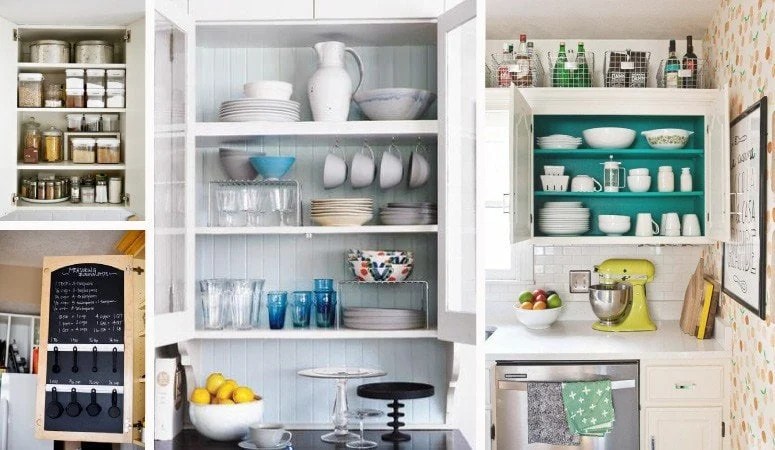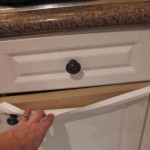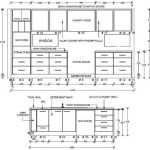Kitchen Cabinet Organizing Ideas: Maximizing Space and Efficiency
Kitchen cabinets are often the unsung heroes of a functional kitchen. They provide essential storage for cookware, dishes, food items, and various kitchen gadgets. However, without a well-thought-out organization strategy, these cabinets can quickly become chaotic repositories of clutter, making it difficult to find what is needed when it's needed. This article explores various kitchen cabinet organizing ideas designed to maximize space utilization, improve accessibility, and enhance the overall efficiency of the kitchen.
Effective kitchen cabinet organization transcends simply filling empty spaces. It involves strategic planning, decluttering, and the implementation of organizational tools and techniques that cater to individual needs and kitchen layouts. By taking a methodical approach, a previously disorganized cabinet space can be transformed into a streamlined and efficient storage solution.
Decluttering and Inventory: The Foundation of Organization
The first step in any successful kitchen cabinet organization project is a thorough decluttering process. This involves removing all items from the cabinets, assessing their usefulness, and discarding or donating items that are no longer needed or used. This seemingly simple step is crucial because eliminating unnecessary items immediately creates more space and simplifies the organization process.
Start by emptying one cabinet at a time to avoid feeling overwhelmed. As items are removed, categorize them into groups such as cookware, dishes, food items, and small appliances. This allows for a clear visual assessment of the types of items being stored and their quantities. While sorting, critically evaluate each item based on the following criteria:
Usage Frequency: How often is this item used? Items used daily or weekly should be stored in easily accessible locations. Items used rarely or not at all may be candidates for donation or disposal.
Duplicate Items: Are there multiple versions of the same item? Consider keeping only the best quality or most frequently used version of each item.
Functionality: Is the item still in good working condition? Damaged or broken items should be repaired or discarded.
Sentimental Value: While some items may hold sentimental value, assess whether they are truly worth keeping if they are not functional or used. Consider storing sentimental items elsewhere if they are contributing to kitchen clutter.
Once the decluttering process is complete, create an inventory of the remaining items. This inventory can be a simple list or a more detailed spreadsheet. The purpose of the inventory is to provide a clear understanding of what needs to be stored and to help guide the organization process. This inventory can also be used to identify any organizational tools or accessories that may be needed to optimize storage.
Implementing Organizational Tools and Accessories
After decluttering, the next step involves strategically implementing organizational tools and accessories to maximize space utilization and improve accessibility within the cabinets. These tools can range from simple shelf liners to more elaborate pull-out organizers, each designed to address specific organizational challenges.
Shelf Liners: These protect cabinet surfaces from spills and scratches. Non-adhesive shelf liners are preferred as they are easier to clean and reposition.
Adjustable Shelves: If possible, adjust existing shelves to better accommodate the height of items being stored. This minimizes wasted vertical space.
Lazy Susans: These rotating platforms are ideal for storing spices, condiments, and other small items, making them easily accessible, particularly in corner cabinets.
Pull-Out Shelves: Also known as slide-out shelves, these provide full access to items stored in the back of cabinets, eliminating the need to reach and rummage. They are especially useful for accessing pots, pans, and other heavy items.
Shelf Dividers: These help to keep stacks of plates, bowls, and cutting boards organized and prevent them from toppling over.
Can Organizers: These tiered racks or dispenser systems help to organize canned goods and prevent them from being lost in the back of the pantry.
Door Organizers: These attach to the inside of cabinet doors and provide storage for items such as spices, cleaning supplies, and pot lids. They maximize otherwise unused space.
Basket Organizers: Wire or plastic baskets can be used to store various items, such as produce, snacks, or cleaning supplies. They help to contain clutter and keep items organized.
Hanging Organizers: These can be used to store items such as dish towels, aprons, or cleaning gloves under the sink or inside cabinet doors.
The specific organizational tools and accessories that are chosen should be based on individual needs, the size and configuration of the cabinets, and the types of items being stored. It is important to measure cabinet dimensions before purchasing any organizers to ensure a proper fit.
Strategic Item Placement and Storage Techniques
Once the decluttering and organizational tool implementation phases are complete, the final step involves strategically placing items within the cabinets using efficient storage techniques. The goal is to create a logical and accessible system that makes it easy to find what is needed and to maintain order over time.
Prioritize Accessibility: Store frequently used items in easily accessible locations, such as within reach on the main shelves. Less frequently used items can be stored on higher or lower shelves, or in the back of the cabinet.
Group Similar Items: Store similar items together, such as all baking supplies in one cabinet or all spices in another. This makes it easier to find what is needed when preparing a meal or baking a recipe.
Utilize Vertical Space: Make the most of vertical space by using shelf risers or stackable containers. This allows for multiple tiers of storage without overcrowding the shelves.
Store Items Vertically: Store items such as cutting boards, baking sheets, and platters vertically rather than horizontally. This makes them easier to access and takes up less space.
Optimize Corner Cabinets: Corner cabinets can be challenging to organize due to their awkward shape. Lazy Susans or pull-out shelves are excellent options for maximizing space and improving accessibility in these cabinets.
Label Everything: Labeling shelves, containers, and drawers can help to maintain organization and make it easier for everyone in the household to find what they need. Use clear, concise labels that are easy to read.
Implement the FIFO Method: For perishable food items, implement the "First In, First Out" (FIFO) method. Place newly purchased items behind older items to ensure that older items are used first, preventing spoilage.
Consider Containerization: Transfer dry goods such as flour, sugar, pasta, and cereal into airtight containers. This helps to keep them fresh, prevents pest infestations, and creates a more uniform and organized look in the pantry.
Utilize Cabinet Doors: Install hooks or racks on the inside of cabinet doors to store pot lids, measuring cups, or small utensils. This maximizes otherwise unused space.
Maintain Regularly: Once the kitchen cabinets are organized, it is important to maintain the organization by regularly decluttering and reorganizing as needed. A quick tidying session every few weeks can help to prevent clutter from accumulating and keep the cabinets in good order.
Organizing kitchen cabinets is an ongoing process, not a one-time event. By implementing these ideas and techniques, anyone can transform their kitchen cabinets into efficient and functional storage spaces, improving the overall efficiency and enjoyment of the kitchen.
:strip_icc()/121035540_331772381251072_3717720175166945340_n-ae336a3237ca44c6bdddd093c7d1eb97.jpg?strip=all)
21 Kitchen Cabinet Organization Ideas You Need To Try

25 Best Ideas For How To Organize Kitchen Cabinets

Inspiring Kitchen Cabinet Organization Ideas Designer Trapped

41 Genius Kitchen Organization Ideas The Family Handyman

60 Clever Cabinet Organization Tips To Double Your Storage 2024

How To Organize The Inside Of Your Kitchen Cabinets

How To Organize Kitchen Cabinets In 9 Simple Steps Trusted Since 1922

20 Genius Kitchen Cabinet Organization Ideas A Cultivated Nest

12 Small Kitchen Organization Ideas Simply Quinoa

Kitchen Sink Cabinet Organization Ideas And Solutions Modern Glam
Related Posts








